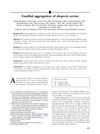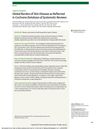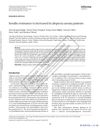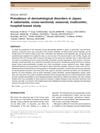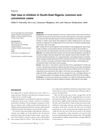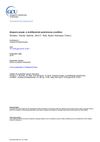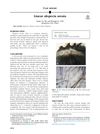Epidemiology and Burden of Alopecia Areata: A Systematic Review
July 2015
in “
Clinical, Cosmetic and Investigational Dermatology
”
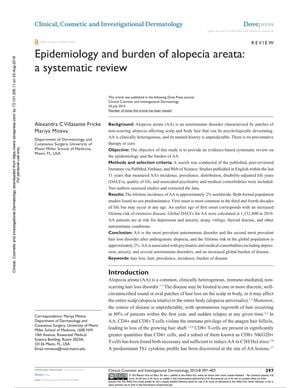
TLDR Alopecia areata is a common autoimmune disease affecting about 2% of people, causing significant disability and often associated with mental health issues and other autoimmune conditions.
The 2015 systematic review found that alopecia areata (AA) is a common autoimmune disorder with a global lifetime incidence of about 2%, affecting individuals with no significant sex predominance, typically beginning in the third and fourth decades of life. An earlier onset is linked to a greater risk of severe disease. The global burden of AA was significant, with 1,332,800 disability-adjusted life years (DALYS) calculated in 2010. AA patients often suffer from psychiatric comorbidities like depression and anxiety, as well as other autoimmune diseases such as atopy, vitiligo, and thyroid disease. Stressful events were recalled by 9.8% of adults and 9.5%-80% of children with AA before hair loss onset. Certain age groups had a higher risk of psychiatric issues, with under 20s more prone to depression and 40-59 year-olds to anxiety and obsessive-compulsive disorder. The incidence of atopy in AA patients was between 11% and 38.2%, and 5% had subclinical hypothyroidism. AA was also linked to other autoimmune disorders, and genetic studies have identified genes related to inflammation and immune modulation. The review emphasized the need for standardized international research to better understand AA epidemiology.
